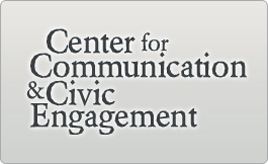THINKING CRITICALLY ABOUT THE ECONOMY
Quick Comparative Rankings
Lesson Plans and Resources | Quick Comparative Rankings
See below for a short list of user-friendly country ranking resources.
NationMaster is a vast compilation of data from sources such as the CIA World Factbook, the UN, and the OECD. The site allows users to rank countries by indicator (i.e., health, crime, agricultural, labor statistics), generate maps and graphics on all kinds of statistics, and create profiles of individual countries. It is also possible to view profiles of individual countries including their maps and flags, use correlation reports and scatterplots to find relationships between variables, and refer to a fully integrated encyclopedia with over one million articles. The goal of the site is to be “the Web’s one-stop resource for country statistics,” bringing them to life by providing visualization technologies and easily accessible data.
The OECD Factbook is a handy resource that ranks the 30 countries of the Organization for Economic Cooperation and Development (OECD) according to the most popular economic, environmental and social indicators (e.g., GDP per capita, life expectancy, infant mortality, etc.). The data are presented graphically for easy viewing, defined and explained in text format, and made accessible as tables which can be manipulated in excel. The Factbook is especially useful when making comparisons between advanced industrial countries like the United States, Germany, Japan, etc.
Accessing the OECD Factbook for first-time users (MS Word)
The Economist’s Pocket World in Figures
The “Pocket World in Figures”, a slim paperback book which has been released by the Economist every year since 1991, is a great resource for those interested in comparative rankings of common economic and social indicators. The 2007 edition ranks 183 countries – all of which had a population of at least 1 million or a GDP of at least $1billion in 2004 – on subjects as diverse as geography, population and demographics, business, financing and the economy, transport, tourism and the environment, society, culture and crime. The “Pocket World in Figures” is available for free to subscribers of the Economist magazine. For those who do not subscribe to the Economist, the resource should be available in most school libraries. If it is not available there, it can be purchased cheaply on-line.
Additional Statistical Databases
Link here for our more comprehensive listing of useful statistical databases to help you further explore the question – What’s the economy for, anyway?


